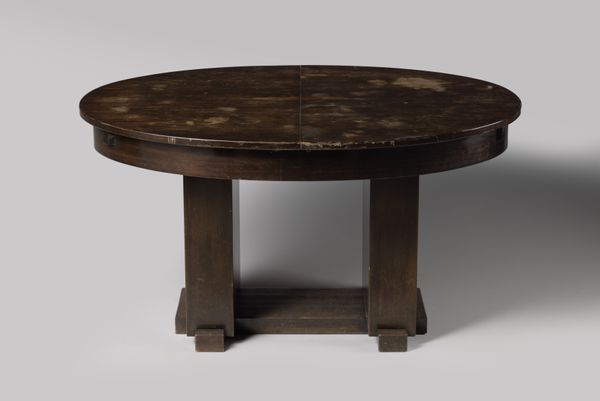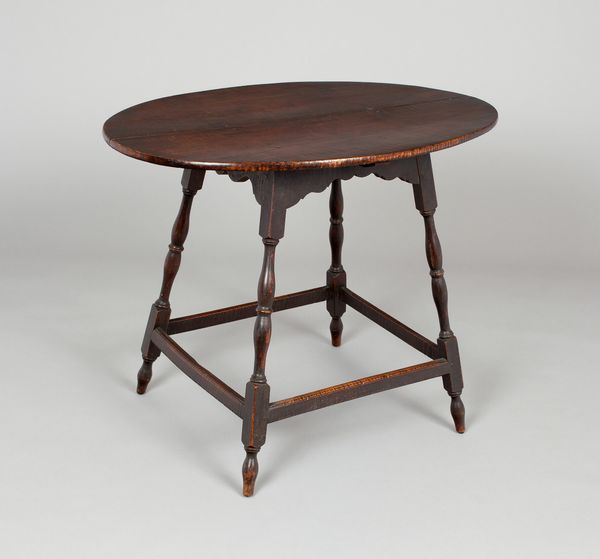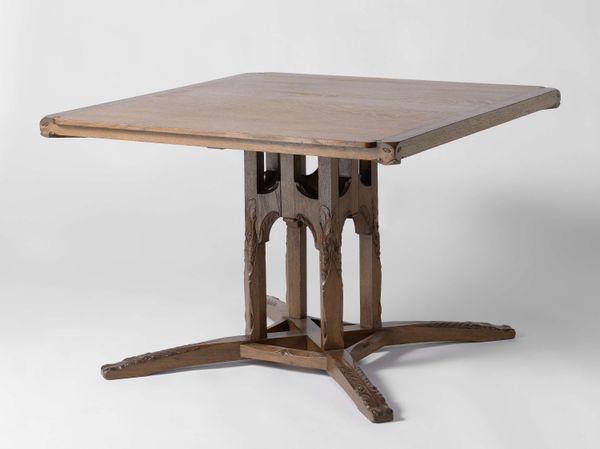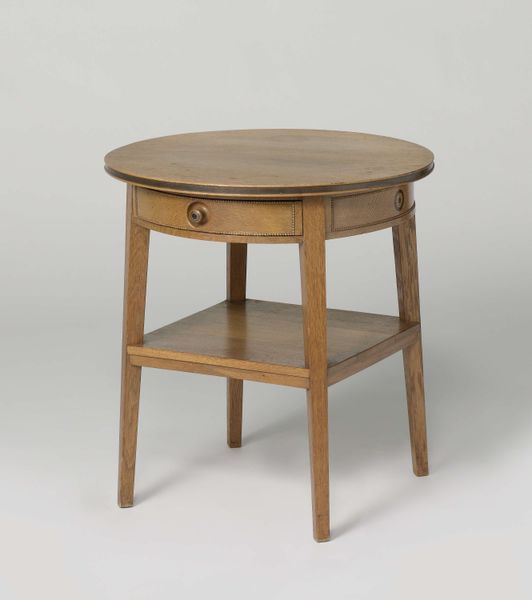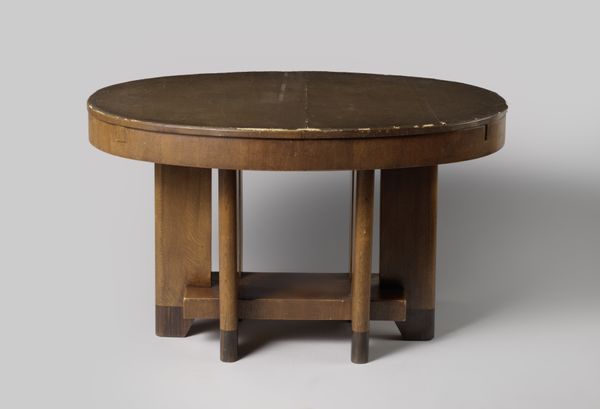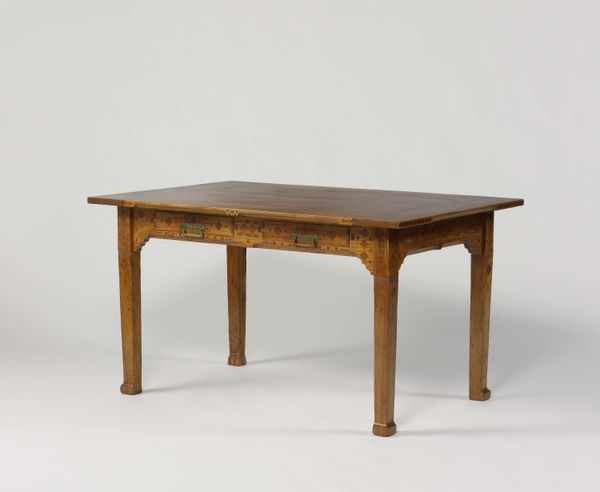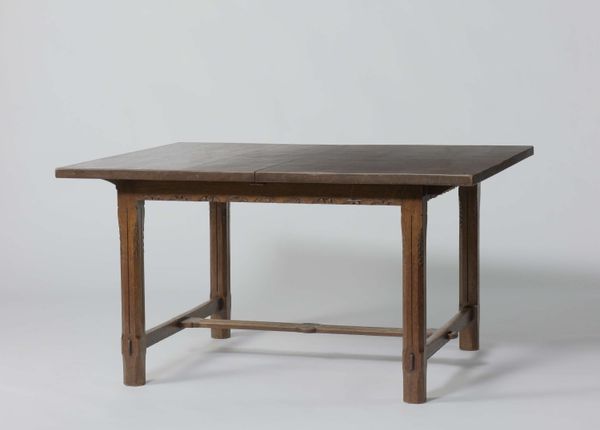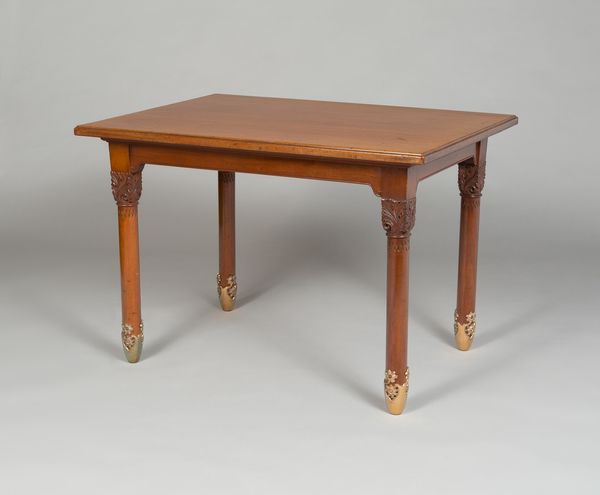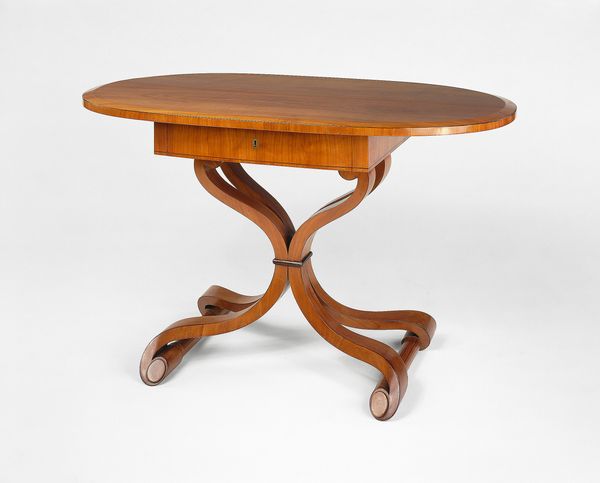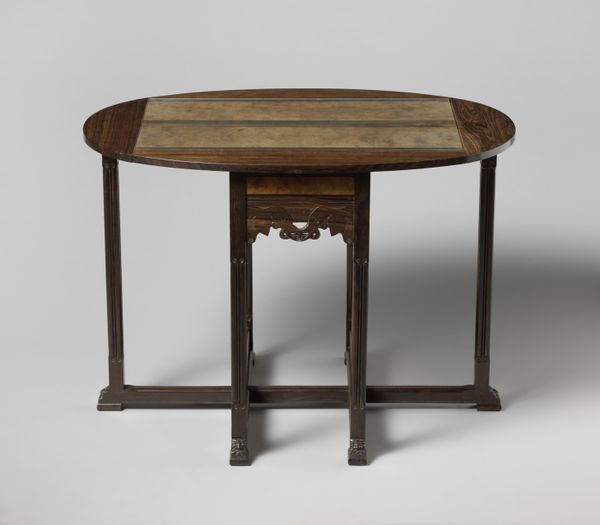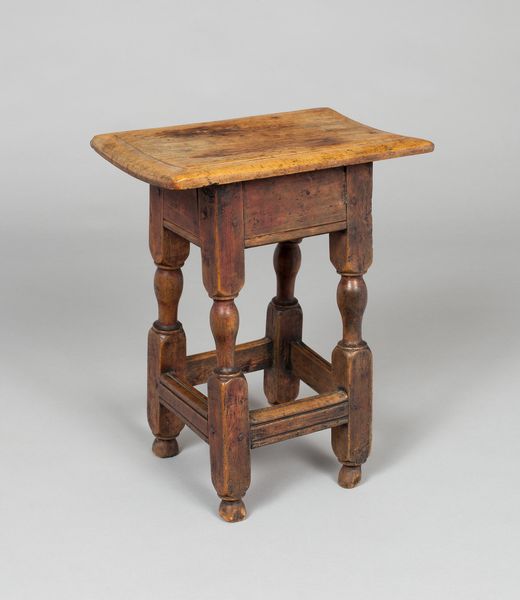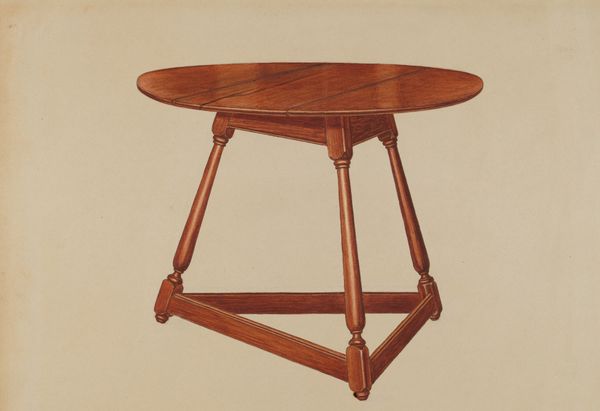
wood
#
folk-art
#
furniture
#
landscape
#
oil painting
#
folk-art
#
wood
#
decorative-art
Dimensions: 70.5 × 133.7 cm (27 3/8 × 44 3/8 in.)
Copyright: Public Domain
Editor: We're looking at a piece titled "Chair Table," made around the 17th century by an anonymous artist. It's currently housed at the Art Institute of Chicago. It's primarily crafted from wood. What strikes me is its functionality – you can tell it was meant to be used. What catches your eye? Curator: Well, for me, the material itself—the wood—speaks volumes. Notice the visible wear and tear; those imperfections are not flaws, but records of use, of labor, and a testament to the lives it touched. It transcends mere furniture. Editor: That’s interesting. So you see the marks and the craftsmanship itself as a kind of history? Curator: Precisely! How was this wood sourced? How was it worked? Consider the social context; Who would have had access to this piece? The labor involved isn't just about producing an object, but about maintaining a certain lifestyle or contributing to a specific kind of social gathering. It invites us to consider craftsmanship, production, and the class distinctions involved in owning something like this. Does the functionality diminish its artistic value in any way? Editor: I don't think so at all. Knowing it was part of daily life actually makes it more compelling. It bridges the gap between fine art and everyday living. I initially thought it was just an antique table, but now I appreciate how it embodies labor and class structures. Curator: Exactly! The perceived boundaries between 'high art' and craft break down when you center materiality and the social conditions of its creation. The chair table isn’t just an object; it’s a repository of social history, materially expressed. Editor: I'll never look at a piece of furniture the same way again. Thanks for this fresh perspective.
Comments
No comments
Be the first to comment and join the conversation on the ultimate creative platform.
